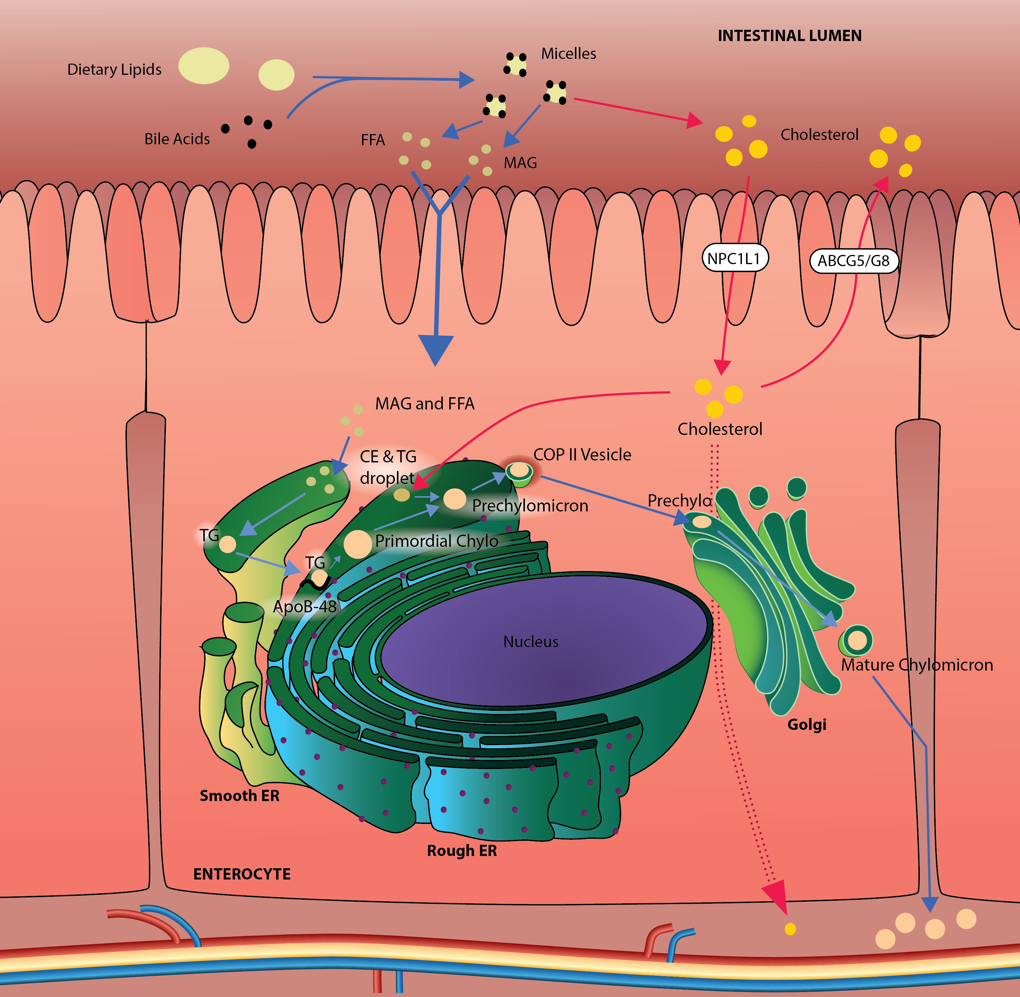
Figure 9. Intestinal Triglyceride and Cholesterol Metabolism. In the intestinal lumen, dietary triglyceride (TG) and cholesterol are emulsified by bile salts which enhance their uptake. Lipases in the intestinal lumen digest triglycerides to free fatty acids (FFA) and monoacylglycerides (MAG). These are absorbed into the enterocyte where they are used in the synthesis of TG, phospholipid and cholesteryl ester (CE). Much of the synthesized TG in enterocytes is packaged, along with phospholipids, cholesterol and proteins into chylomicrons, which are secreted at the basolateral surface of the enterocyte and enter the lymphatic system. The assembly of chylomicrons begins in the endoplasmic reticulum. During the synthesis of apolipoprotein B48 (apoB48), the protein acquires phospholipid from the endoplasmic reticulum membrane and also cholesterol and TG to form a primordial chylomicron. Continued acquisition of TG and CE and smaller, exchangeable proteins (e.g. apolipoprotein A-IV and apolipoprotein C-III) in the endoplasmic reticulum enlarges the particle to form a prechylomicron. Prechylomcirons are transported to the Golgi apparatus in specialized COPII vesicles. In the Golgi apparatus, the prechylomicron matures into a chylomicron. The maturation process includes the glycosylation of apoB48, the acquisition of additional proteins (e.g. apolipoprotein A-I) and lipid. Secretory vesicles formed from the Golgi carry the mature chylomicrons to the basolateral surface of the enterocyte. Fusion of the secretory vesicle membrane with the plasma membrane releases the chylomicron into the extracellular space where it is taken up into lacteals near the enterocyte and, thus, enters the lymphatic circulation. Dietary cholesterol in the intestinal lumen is taken into the enterocyte by a process involving Niemann-Pick C1-like protein 1 (NPC1L1). Enterocyte cholesterol and CE can be incorporated into chylomicrons and secreted with TG. In addition, enterocyte cholesterol can be directly excreted into the intestinal lumen using the heterodimer ATP-binding cassette transporter G5 and G8 (ABCG5/G8). Enterocyte cholesterol can also be transported to and incorporated into the basolateral membrane for efflux into the circulation.
